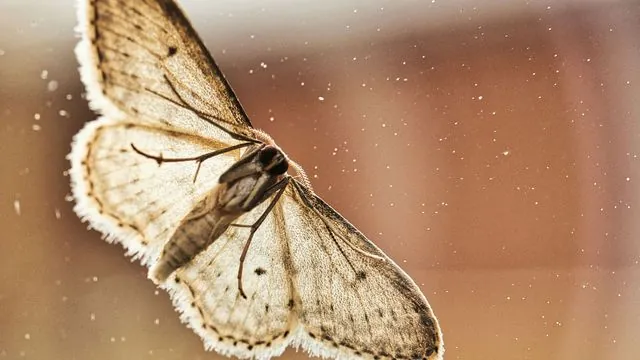
Climate Change Spells Disaster: Invasive Spongy Moth Threatens North America's Forests
2025-01-07
Author: Benjamin
Introduction
Experts from the University of Chicago and Argonne National Laboratory have revealed alarming predictions: as climate change intensifies, the invasive spongy moth could wreak even greater havoc across North America. Research published in *Nature Climate Change* highlights that the anticipated hotter and drier conditions will undermine a beneficial fungus that typically keeps this destructive pest in check.
The Role of Ecosystem Interdependencies
Professor Greg Dwyer from UChicago stated, “Most climate studies focus on individual species, overlooking the critical interdependencies in ecosystems. A slight climate shift can set off significant ripple effects across multiple organisms.” This underscores the necessity of advanced computer modeling to grasp the complex interplay between climate change and biodiversity.
About the Spongy Moth (Lymantria dispar)
The spongy moth (Lymantria dispar), originally hailing from Europe, first infiltrated New England’s hardwood forests in 1869. The female moth lays eggs on various surfaces, including tree branches and even outdoor furniture, enabling its widespread distribution as people inadvertently move these items. The larvae are notorious for feasting on tree leaves, predominantly targeting oaks, leading to substantial deforestation and ecological damage.
Natural Control Measures
The introduction of the fungus Entomophaga maimaiga in 1989 provided a natural control measure for the spongy moth population. While details of its introduction remain unclear, this pathogen significantly limited spongy moth populations by causing fatal infections, saving countless trees from destruction. Additionally, the nucleopolyhedrovirus (NPV) can also keep spongy moth numbers under control; however, it requires larger populations to spread effectively.
Potential Consequences of Climate Change
Dwyer highlights, “Even minor reductions in moth mortality can lead to exponential increases in tree defoliation. If the moths avoid mortality at low numbers one season, they rebound in greater numbers the next—creating a multiplication effect.” Dwyer's research trajectory has been focused on infectious disease interactions across species, including his early modeling work on spongy moth dynamics. As climate conditions grow more favorable for the moths and their survival rates increase, these models predict dire consequences not just for forests, but also for ecosystems reliant on healthy tree populations.
Refined Climate Modeling
Collaborating with atmospheric scientists Jiali Wang and Rao Kotamarthi at Argonne, Dwyer’s team integrated refined climate data into their models, allowing a closer examination of specific weather patterns affecting moth populations. The findings are unsettling: projections indicate a significant drop in fungal infection rates due to climate change over the coming decades, allowing moth populations to explode unchecked.
Urgent Call to Action
Worse yet, recent weather patterns—characterized by lower rainfall and higher temperatures—have already triggered considerable spongy moth outbreaks, occurring sooner than scientists anticipated. Dwyer remarked, "Our projections may have been pessimistic, but not by nearly enough. This situation is incredibly alarming." With the threat of an uncontrolled spongy moth population looms, the urgent question emerges: what steps can be taken to mitigate the impacts of climate change and invasive species on North America's vital forests? As researchers continue to delve into these ecological challenges, the fate of millions of trees hangs in the balance.
Conclusion
Prepare for a future where your favorite green spaces could be transformed into barren wastelands by moths if we don’t act now!



 Brasil (PT)
Brasil (PT)
 Canada (EN)
Canada (EN)
 Chile (ES)
Chile (ES)
 Česko (CS)
Česko (CS)
 대한민국 (KO)
대한민국 (KO)
 España (ES)
España (ES)
 France (FR)
France (FR)
 Hong Kong (EN)
Hong Kong (EN)
 Italia (IT)
Italia (IT)
 日本 (JA)
日本 (JA)
 Magyarország (HU)
Magyarország (HU)
 Norge (NO)
Norge (NO)
 Polska (PL)
Polska (PL)
 Schweiz (DE)
Schweiz (DE)
 Singapore (EN)
Singapore (EN)
 Sverige (SV)
Sverige (SV)
 Suomi (FI)
Suomi (FI)
 Türkiye (TR)
Türkiye (TR)
 الإمارات العربية المتحدة (AR)
الإمارات العربية المتحدة (AR)